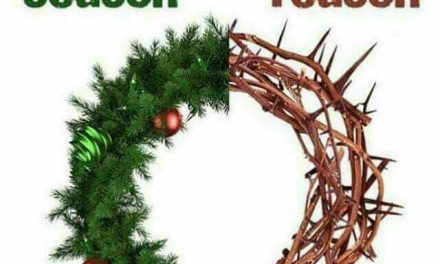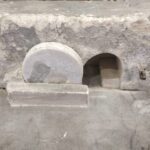None of the legends and other folklores of green beer or leprechauns, banishing snakes from Ireland, using shamrocks to teach the Trinity, or walking stick growing into a living tree has anything to do with the real Patrick. St Patrick’s Day is more important than what he did in Ireland because of what he symbolises in such a season as this and at a time when the church is loosing its identity, authority, and bearing. Succat, meaning ‘warlike’ in modern Welsh and later known as St Patrick was born about the year A.D 372 A.D to a British family of Calpurnius, deacon of the church of Bonavern and Conchessa, sister to the celebrated Martin, archbishop of Tours. At his tender age, Conchessa, instilled into Succat’s heart the doctrines of Christianity.
At sixteen years of age, Succat was captured by a band of Scottish slave-dealing pirates who sold him to the Druid chieftain, Milcho, who reigned in the north of Ireland. For six years Patrick herded the cattle of this ruthless pagan chieftain. Alone and in the solitary pasture, Succat, ‘the young slave called to mind the divine lessons which his pious mother had so often read to him.’ Like the prodigal son, in the heathen land, he surrendered his life to Jesus of whom Conchessa had so often spoken. Patrick’s “Confession” tells us the summary of his conversion: “When I was a youth, I was taken captive before I knew what I should desire or seek, or what I ought to shun.” He met the Saviour in his servitude in the bleak forest of northern Ireland and it is argued that God might have used the weird Druid ceremonies to inspired him become a missionary to the heathen people.
Patrick came as a slave to a country which was ‘spiritual but had a spirituality which lacked roots.’ St Patrick stirred up the Celtic belief within the Irish people with purity in Biblical doctrine. St Patrick, a Bible-reading, Bible-believing, Bible-preaching missionary changed the course of the world’s history with the Celtic Christianity shaping the destinies of the Church of the West. St Patrick challenged the “royal authority by lighting the Paschal fire on the hill of Slane on the night of Easter Eve … the occasion of a pagan festival at Tara, during which no fire might be kindled until the royal fire had been lit.” Anointed and filled with Holy Spirit, St Patrick challenged the king, the druid priest, and all the forces of hell and the flame of revival sweep over all Ireland with tears of repentance. In the year 428 A.D Easter morning, St Patrick and his assistant missionaries marched into the presence of the monarch and told him that ‘Christ was the light of the world and preached Jesus crucified and risen from the dead with such persuasive eloquence that the king was born again by the Spirit of the living God.’ John L. Stoddard states: “During the sixth, seventh and eighth centuries, especially, this farthest boundary of the Continent held aloft and kept aflame the torch of Christian faith, and glittered like a star upon the dark horizon of the western world.’ Just as St Patrick lifted the Irish out of the darkness of paganism into the glorious light of the Truth, St Patrick’s Day in Lent calls us to a special spiritual flame in our hearts to set the church free from secularism. This flame of Christ that burns deep down within our souls connecting us to the deep spirituality of our Christian root.
St Patrick‘s Day in Lent is re-telling the true story of St Patrick, a practical theologian with an inspiring lesson in God’s grace and mercy. St Patrick’s Day in Lent is reclaiming the Great mission and missionary identity of the Church. As a slave who became an evangelist, he wrote, ‘but I fear nothing, because of the promises of heaven.’ St Patrick’s Day in Lent is about a choice between stone and bread and, heaven and hell. St Patrick, a missionary to a forgotten people came ahead of his time but left a true Biblical legacy. St Patrick’s Day in Lent reminds us that the world and the church needs leaders like St Patrick. Let us pray for the afflicted and sorrowful.
Prayer for personal renewal on St Patrick’s Day:
“I bind to myself today The strong power of the invocation of the Trinity;
The faith of the Trinity in unity; The Creator of the elements.
” I bind to myself today, The power of the incarnation of Christ
With that of His baptism; The power of His crucifixion
With that of His burial; The power of the resurrection
With (THAT OF) the ascension; The power of His coming, To the sentence of judgement . . .
” I bind to myself today, The power of God to guide me,
The might of God to uphold me, The wisdom of God to teach me,
The eye of God to watch over me, The ear of God to hear me,
The Word of God to give me speech, The hand of God to protect me,
The way of God to prevent me, The shield of God to shelter me,
The host of God to defend me, Against the snares of demons
Against the temptations of vices, Against the lusts of nature,
Against everyone who would injure me Whether far or near; Whether few or many.
” I have set around me all these powers, Against every hostile, savage power
Directed against my body and my soul; Against the incantations of false prophets, Against the black laws of heathenism, Against the false laws of heresy,
Against the deceits of idolatry, Against the spells of women, and smiths, and Druids. Against all knowledge that blinds the soul of man.
” Christ protect me today, Against poison, against burning, Against drowning, against wound, That I may receive abundant reward.
Christ with me, Christ before me,
Christ behind me, Christ within me, Christ beneath me, Christ above me,
Christ at my right hand, Christ at my left, Christ in the fort (when I am at home),
Christ in the chariot-seat (when I travel), Christ in the ship (when I sail).
Of the Lord is salvation; Christ is salvation;
With us ever be Thy salvation, O Lord!
“Christ in the heart of every man who thinks of me,
Christ in the mouth of every man who speaks to me;
Christ in every eye that sees me,
Christ in every ear that hears me.”











Recent Comments